Vita Brevis (40 page)
Authors: Ruth Downie

The passengers were settling down for the long evening now, surrounding themselves with their bags, trying to make themselves comfortable. He would wait until they had had nothing to look at but flat water and reeds for a long time and then try them with the honey cakes and the watered wine, and perhaps they would even buy the baby one of the little dolls someone had shown him how to make from plaiting the reeds. Bored people with money would buy anything.
It wasn’t time yet. They were still talking. The man—the older one, not the gangly one with the black eye—was lying back on one of the mattresses watching the sky go past. He said, “They thought I was asleep, but I wasn’t. I was thinking.” He tried to sit up without moving the baby dozing in the crook of his arm. “And then it happened,” he said. “The whole world came clear and sharp and there were colors I’d never noticed before—I mean, I had, but they were themselves, only more so. And that’s when I realized the gods had given me the answer to everything.”
The blond woman looked up from the fleece she was spinning and said, “Your own medicine was the answer to everything?” as if she didn’t believe him.
“Probably the poppy. I wanted to rush out and tell you.”
“Tell me now.”
The boy carried on with his plaiting, not daring to breathe. Hoping they would not notice him. If he was sent away now, he would never know the answer to everything.
“Well?” said the woman.
“I can remember knowing it,” the man said. He reached up to scratch one ear with his forefinger. “I just can’t remember what it is.”
UTHOR'S
N
OTE
Writing about Roman Britain usually involves a great deal of guesswork and invention to fill in the gaps. Writing about Rome presents the opposite problem: too much information and a terrifying number of ways to get things wrong. But as with every novel, there came a time when the research had to stop and the story had to be written. Here are a few of the points where the two joined together. Or didn't.
Some of the locations in the story were inspired by fragments of the Forma Urbis, Rome's ancient and fascinating street map, which is currently online at
http://formaurbis.stanford.edu/
.
Other locations are still visible on the ground. The building site where Ruso first sees Curtius Cossus supervising the crane team became Hadrian's Temple of Venus and Roma, and its remains are a fine sight from the Colosseum. A short walk uphill from the Colosseum leads to a park where sections of the walls around Trajan's vast bathing complex still stand. Farther west, Trajan's column is a splendid memorial to him, although the grand libraries and their balconies on either side of it are long gone.
Sadly the Pantheon was built too late to fit into the story, and while Trajan's shopping center and market halls are a delight
for the modern visitor, I failed to find a reasonable excuse to send any of the characters there on a spending spree.
Roman-style apartment blocks can best be seen in the port city of Ostia Antica, as can street bars and the local headquarters of the VigilesâRome's night watch/fire brigadeâwhich regularly sent its men downriver to serve there.
Lured by shopping opportunities, bars, and sunny courtyards with fountains playing in them, it is sometimes tempting to imagine that we might feel at home in the Roman empireâat least in those parts well away from the horrors of the amphitheater. Yet the reliance of the whole edifice on slave labor is a sharp reminder of how alien some of the ancient world's thinking was to our own. Although numerous attempts were made to refine the law, often for the slaves' benefit, abolishing slavery itself seems to have been unimaginable.
The lot of a Roman slave was not always as dreadful as we might imagine, nor as predictable. Slavery was not connected to race, and neither was it always a life sentence: Many of the leading citizens of Pompeii were freedmen and freedwomen, who presumably saw no irony in owning slaves themselves. For some, though, the situation could be exceedingly grim. An inscription from Puteoli sets out the duties of the local undertaker, a contractor who was expected not only to conduct funerals, but also to carry out punishments on behalf of the magistrates, or indeed of anyone who wished to have a slave punished privately. The list of equipment the contractor might deem necessary makes for gruesome reading.
There is no shortage of good books on Rome. Here are some of them:
The Roman Household: A Sourcebook
by Jane F. Gardner and Thomas Wiedemann
The Roman Guide to Slave Management
(also published as
How to Manage Your Slaves
) by Marcus Sidonius Falx with the modern assistance of Jerry Toner
The Colosseum
by Keith Hopkins and Mary Beard
Roman Architecture: A Visual Guide
by Diana E. E. Kleiner
Ancient Rome: City Planning and Administration
by O. F. Robinson
CKNOWLEDGMENTS
For guidance, encouragement, admin, editing, and lunch (not in that order) I’m grateful to the professionals: George Lucas at Inkwell; Araminta Whitley, Peta Nightingale, and Jennifer Hunt at Lucas Alexander Whitley; Lea Beresford, Gleni Bartels, and the folks at Bloomsbury who do the jobs authors rely upon but can rarely name; Ashley Polikoff for copyediting; and Susie Pitzen for proofreading.
Many thanks to the kind people who answered my requests for bizarre information—including Mike Bishop, Drs. Vicki and Mike Finnegan, Annelise Freisenbruch, Dr. Martin Mather, and members of the Roman Army Talk Facebook group.
Andy Downie’s patience has been nothing short of miraculous. At least he had a trip to Italy this time, instead of having to tramp up and down wet hillsides in England.
Finally—there are always mistakes, and they are always mine. So, to the person I’m sure I’ve accidentally left out, apologies.
OTE ON THE
A
UTHOR
Ruth Downie
is the author of the
New York Times
bestselling
Medicus
, as well as
Terra Incognita
,
Persona Non Grata
,
Caveat Emptor
,
Semper Fidelis
, and
Tabula Rasa
. She is married with two sons and lives in Devon, England.
Don’t miss the other riveting novels in the bestselling Medicus series.
Medicus
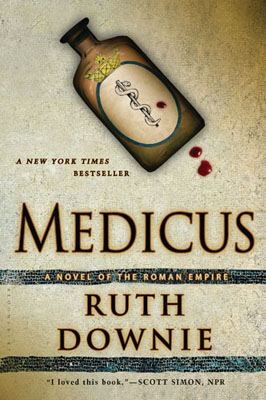
Ruso is caught in the middle of an investigation into the deaths of prostitutes in Deva when he rescues a slave, Tilla, from a brutal beating by her master. As Ruso adjusts to Tilla’s presence in his life, he must summon all his forensic knowledge to find a killer who may be after him next.
Terra Incognita
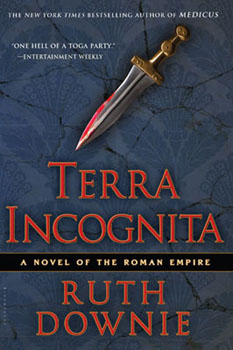
In Britannia, Ruso must try to prove that the former lover of his British slave Tilla is innocent of the murder of a Roman soldier—and that the Army is wrong—by finding another suspect. Soon both Ruso’s and Tilla’s lives are in jeopardy, as is the future of their burgeoning romantic relationship.
Persona Non Grata
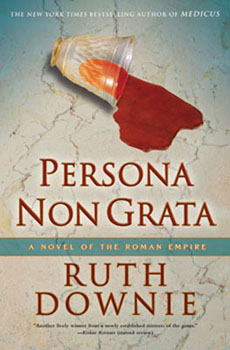
Ruso has been called home to Gaul and he brings Tilla to meet his family, who are being sued for bankruptcy. Their icy treatment of Tilla is the least of Ruso’s worries when the plaintiff in the bankruptcy suit winds up dead.
Caveat Emptor
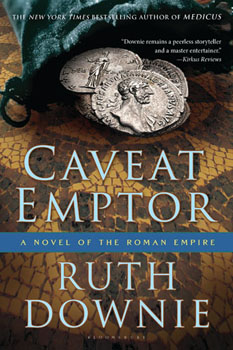
Despite our hero’s best efforts to get himself fired from investigating the disappearance of a Roman tax collector in Britannia, he and Tilla find themselves trapped at the heart of an increasingly treacherous conspiracy involving the legacy of Boudica, the Rebel Queen.
Semper Fidelis
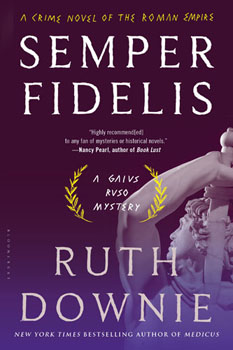
Can the mysterious injuries and deaths plaguing Ruso’s men in the Twentieth legion really be caused by a curse? When the Emperor Hadrian and his distinctly unimpressed Empress, Sabina, finally arrive for a long-awaited visit to Britannia, Tilla begins to find some answers—and is marked as a security risk by the Army.
Tabula Rasa
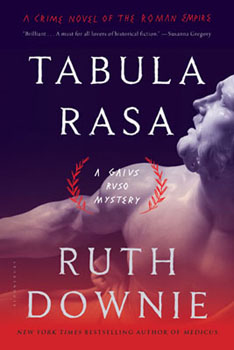
Ruso and Tilla are helping to tend the builders of Hadrian’s Great Wall amid strife with the Britons when first Ruso’s clerk and then a native boy disappear.
